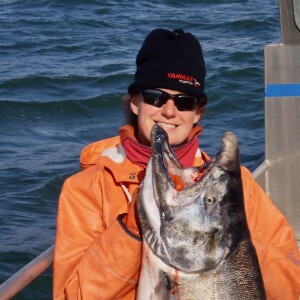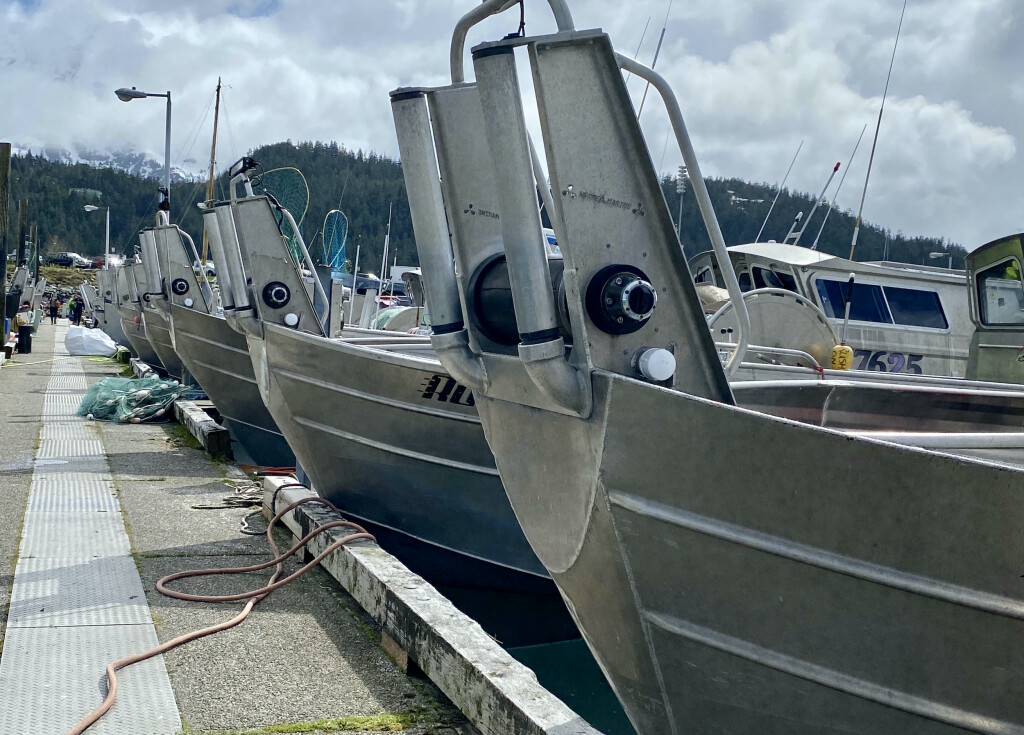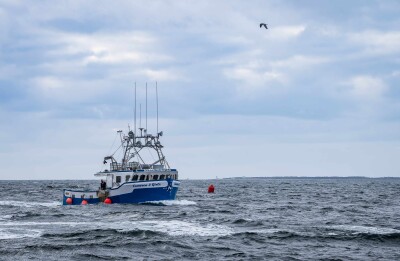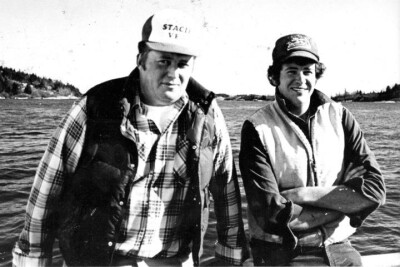With the Miles Lake sonar some 50 miles upriver ticking away, the Copper River reopened for the season’s first 24-hour opener last week, just in time to have fresh Copper River kings or sockeye for Father’s Day and Juneteenth weekend.
Until now, the handful of commercial fishing periods on the Copper River Flats have been only 12 hours each or canceled altogether as a result of lower-than-anticipated escapement. On Monday, June 21, the flat was back to a 12-hour opener.
In the beginning of May, too much ice was in the Copper River to fully deploy the north and south bank sonars used to count the salmon going upriver for escapement management. Then both king and sockeye salmon going upriver turned up in lower numbers than projected.
Both the upper and lower sonars are now fully operational as spring has sprung on the Copper River Delta, and the ice in the river has cleared away.
As of June 18, the cumulative sonar salmon count was 378,456 fish verses a projection of 336,143 needed for the Alaska Department of Fish and Game to reach escapement management goals. What that means is the daily passage of salmon is increasing, and the Miles Lake sonar station is indicating that the in-river escapement —managed for the sustainability of the run — is likely to be met. The flats are also open on all Saturdays from May 25 to Oct. 31 from 6 a.m.-10 p.m. for subsistence fishing.
The Area E drift gillnet commercial fishing area consists of the Copper River Flats and Prince William Sound. The gillnet fleet has the option of fishing either side under one permit.
Unlike Bristol Bay, there is not a 48-hour transfer time to change fishing locations. The sound is also now open to drift gillnet harvest in Coghill and Eshamy District. The Bering River District remains closed.
Overall, the Alaska salmon harvest remains behind where it was at this point in 2020 (2019 for pink salmon), but the pace of the harvest began to catch up over the last week (ending June 19), largely because of strong sockeye harvests in the Alaska Peninsula and Kodiak regions, according to Dan Lesh at McKinley Research Group.
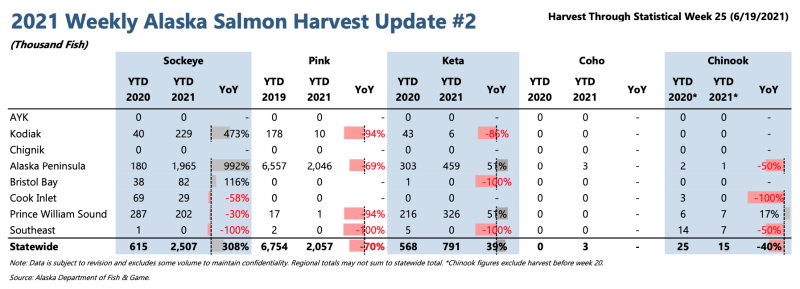 As of Saturday, June 19, almost 5.4 million salmon had been caught so far this season, 67 percent of the 2020 harvest at the same point. The week prior tallied 40 percent of the year over year harvest.
As of Saturday, June 19, almost 5.4 million salmon had been caught so far this season, 67 percent of the 2020 harvest at the same point. The week prior tallied 40 percent of the year over year harvest.
So far, about 15,000 king salmon have been harvested, well less than the five-year average to date of 23,000. Peak king harvests are usually in late June and early July. This year’s keta and pink salmon runs are also behind pace, but the peak harvest for these two species is more than a month away. The bulk of the silver salmon runs do not typically arrive until mid-August.




